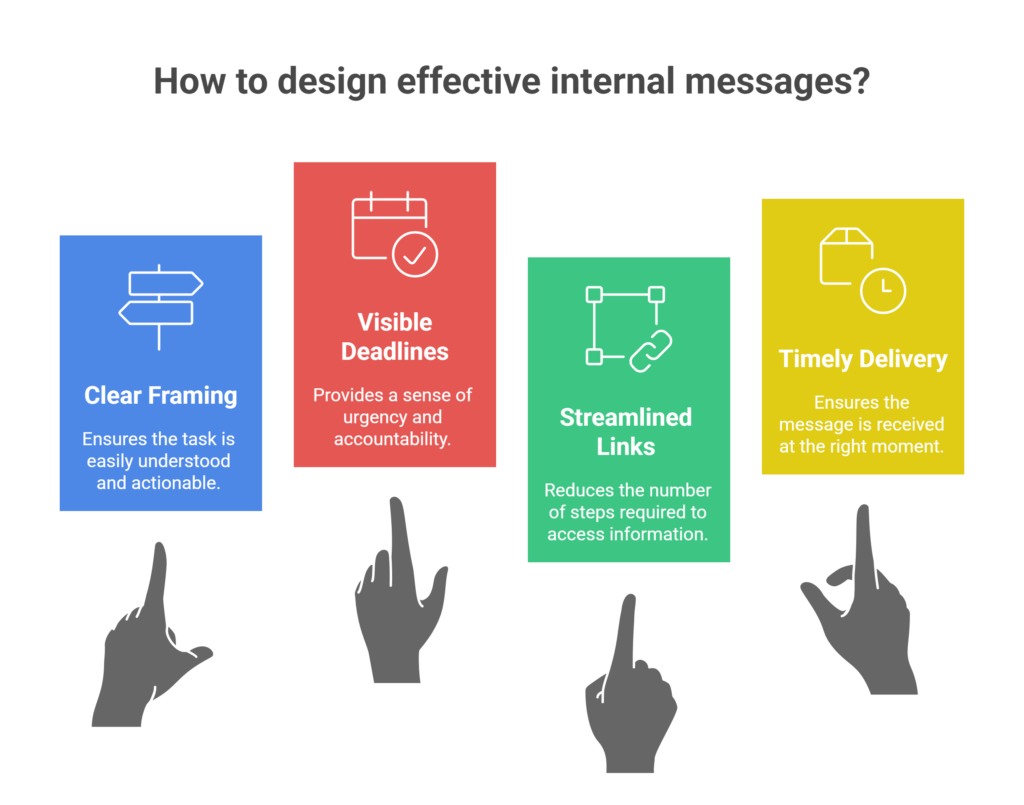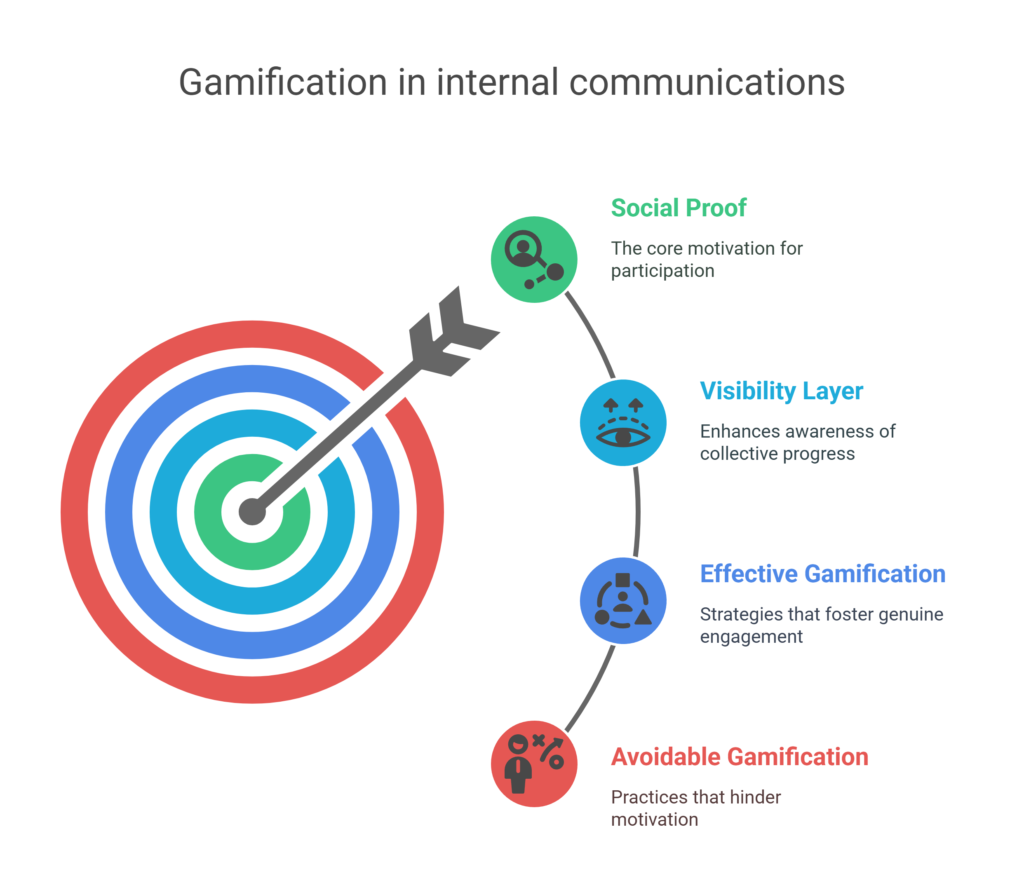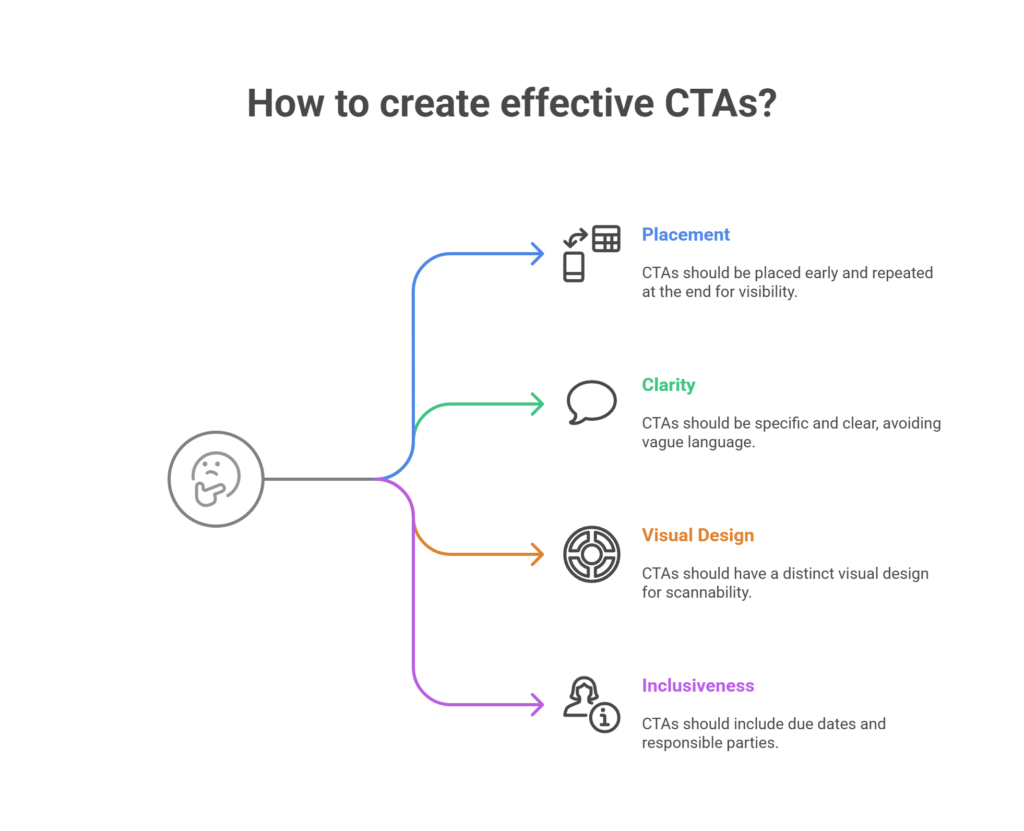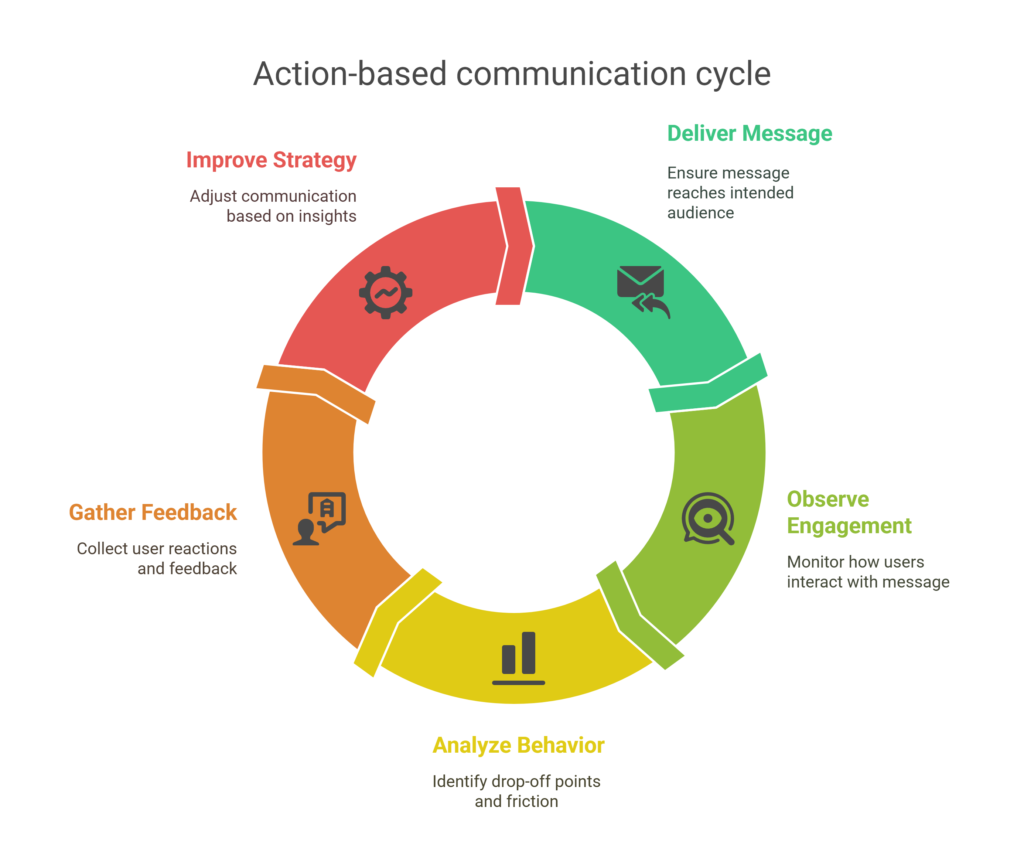There’s a dimension of user (employee) needs in internal comms that isn’t focused on awareness or alignment. It’s designed to generate action.
These aren’t the big cultural updates or leadership posts that build morale or narrative. They’re quieter but no less important. They’re operational requests.
They ask people to do something specific.
- Complete training
- Submit feedback
- Join an initiative
- Install a tool
- Show up on time, at the right place, for a clear reason
And when these messages don’t land, the consequences are very real. Adoption lags. Campaigns stall. Strategic priorities lose pace. Not because the task wasn’t important, but because the message asking for it didn’t stick.
What you’re seeing here isn’t a content issue. It’s an execution issue.
Internal comms teams often rely on one-size-fits-all templates. That works for some formats, like updates or values-led storytelling. But when the goal is action, that same structure fails. The ask is unclear. The CTA comes too late. The tone feels optional. When response rates drop, the instinct is to resend or rephrase, hoping repetition will make up for it.
But it’s rarely about repetition. It’s about friction.
The “Motivate Me” dimension in the User Needs Model for Internal Communications helps teams see this more clearly. It gives you a lens to design for behaviour. Not for tone. Not for aesthetics. But for outcomes.

1. Friction before feeling
The default assumption when messages go ignored is that employees don’t care. That they lack motivation. But the more likely culprit is effort. Not emotional, but operational.
Maybe the task wasn’t framed clearly. Maybe the deadline wasn’t visible. Maybe the link required multiple steps. Maybe the timing just didn’t make sense.
Friction compounds fast. A few extra clicks, a bit of uncertainty, a sense that “this can wait” and the window closes. Not because someone decided to skip it, but because they weren’t sure how to start.
“Motivate Me” communications begin by designing for that reality. The goal is not to convince people to care more. It’s to make action easier than inaction.

2. Build messages like workflows
Think less like a writer and more like a UX designer. If your message is asking for behaviour, it should walk someone through the task as if they’re about to complete it.
A reliable framework covers five questions:
- What’s being asked?
- Why now?
- What do I need to do it?
- How long will it take?
- Where do I go if I’m blocked?
Even a strong message will fall short if it misses any of these. Or worse, hides them behind layers of intro text or corporate formality.
Example that misses the mark: “Just a reminder that the Q3 compliance module is now available.”
Stronger version: “Complete Q3 compliance training by Friday, 3pm. It takes 10 minutes. Mandatory for all managers. Link below.”

3. Use microlearning to remove hesitation
Some action falls through not because it’s unwanted, but because it’s unfamiliar.
Microlearning isn’t about teaching new skills. It’s about reducing the effort of figuring things out. A short walkthrough. A tip that shows someone what good looks like. A poll that creates interaction and reminds them of what’s coming.
What matters here is proximity. You don’t send a training video a week before it’s needed. You send it when someone’s most likely to act on it.
Examples that work well:
- For new tools: Share three short clips, each 90 seconds, spaced out across three days. Each one covers a different task.
- For reviews: Share daily prompts that demystify how to give useful feedback.
- For policy updates: Use single-question polls over a few days that reinforce takeaways and make people pause just long enough to understand.
Tools like tchop™ make it easy to embed these into segmented feeds or timed push alerts. But even without automation, the principle holds. Design for understanding, not just delivery.

4. Reflect participation, don’t manufacture it
Gamification in internal comms has often been reduced to shiny badges and meaningless points. But that’s not what motivates action.
Used with care, gamification becomes a visibility layer. It shows people they’re not alone. That their colleagues are already doing the thing being asked. And that progress is moving forward, whether they engage or not.
The psychology here is social proof, not novelty.
What works:
- Live progress bars that update as employees complete a task
- Opt-in leaderboards that track participation across departments or regions
- Simple streak tracking for habits like check-ins or daily reflections
What to avoid:
- Excessive icons and points that don’t translate to outcomes
- Rankings that create pressure instead of motivation
- Gamified campaigns that feel bolted on rather than integrated

5. Make CTAs carry the whole message
The CTA should be able to stand on its own. If an employee skims past everything else, that line (the action, the deadline, the expectation) should still be visible, specific and clear.
CTAs fail when they:
- Hide at the bottom
- Say too little (“Click here” or “Check it out”)
- Soften their ask with over-politeness
- Don’t include a due date or define who’s responsible
CTAs that work tend to live early in the message. They get repeated at the end. They have shape. A button. A block. Something scannable.
Examples:
“Submit Q3 goals by Friday, 5pm. Required for team leads. Takes five minutes.”
“Opt in to the October Q&A. Add your question before Thursday noon. Button below.”

6. Track behaviour, not visibility
Clicks and opens can be useful signals. But for action-based comms, they’re not the endpoint.
You want to know:
- Did the message reach the right people?
- Was the CTA seen early enough?
- Did they click? And more importantly, did they follow through?
- Where do people usually stop?
- Are there signals (emoji reactions, feedback blocks) that show confusion or hesitation?
Tools like tchop™ make this easy to monitor across mobile and web. But more important than dashboards is the ability to ask the right questions.
Don’t just track the path. Understand why it failed and what friction came into play.

The structure is the strategy
You don’t create motivation through inspiration. Not in internal comms. You create it by making the right action feel clear, doable and timely.
That’s what “Motivate Me” helps you build. Not a better message, but a better path between seeing something and acting on it.
The highest-performing internal comms don’t try to be louder. They try to be easier to act on.
That’s the difference.








